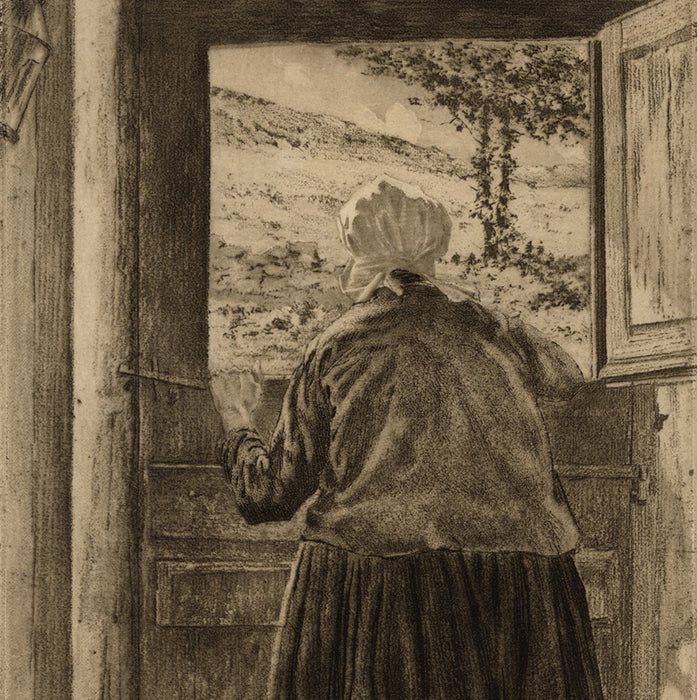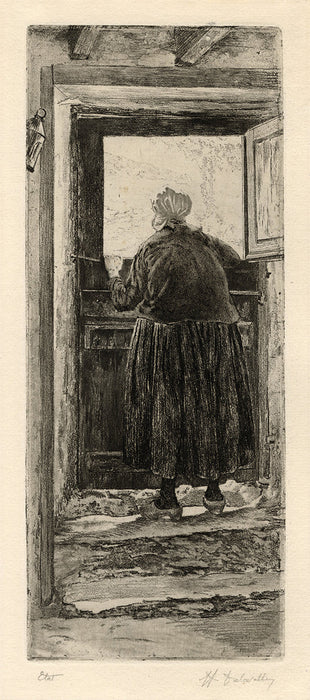Angelique at Her Door
Angélique à Sa Porte (original French title)
Soft-ground etching, etching, and aquatint on laid paper.
Reference: Morane 15.
We present two states of the same etching. Morane mentions a single early state before aquatint. He had however most certainly not known of our early state, which already has some aquatint added. The plate was, however, completely worked over beyond this early state. More aquatint and line etching were added, and Delavalée also clearly focused his attention on the contrast of light and shade, perhaps even burnishing some parts of the plate.
Yes, we remain passionately biased in favor of Henri Delavallée’s etchings. He obviously benefited from seeing the work of Manet, Pissarro, Bracquemond, and Guérard, but he must, in our opinion, be regarded as an underappreciated member of the Impressionist reimagination of the art of etching. The finesse of the shading of this etching is one each of the aforementioned artists would have been proud to achieve. The artist’s choice of naming a subject we only see from behind is also marvelously evocative and narrative. Why is she at the door? Is she speaking to someone, or waiting for this person? Is she hoping to get out, or did she just come and take in the sunrise? Or is it a sunset? Maybe the smoke from the hearth just stung her eyes and she’s breathing in fresh air. We get to make up so many stories of who Angélique is, and what this window to her world represents for her. The light is magnificently placed on just a few contours, evoking just how dark the house is compared to the outside. This etching captures just one moment in the life of a Breton woman, and yet it opens for us a door (or is it just a window) into a world we will never know beyond the artists’ and our imagination.
Both impressions signed, one annotated, one numbered in pencil.








